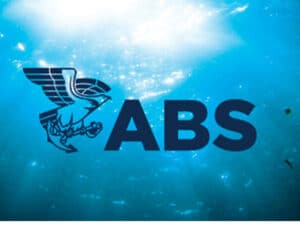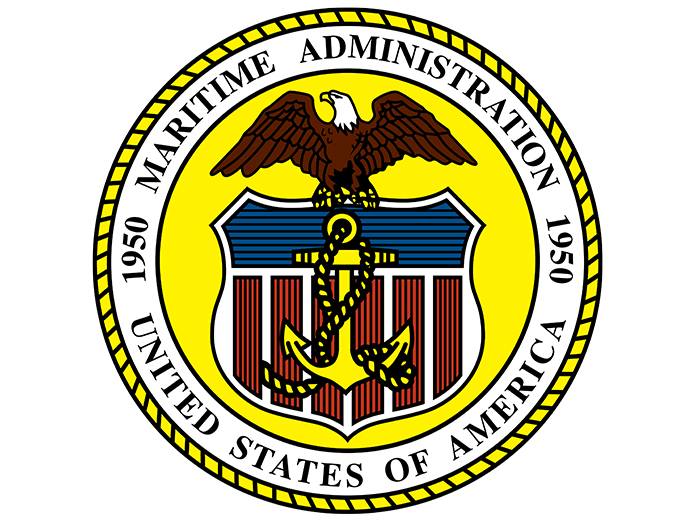
MARAD awards $653 million in port infrastructure grants
Written by Marine Log Staff
MARAD today announced the award of over $653 million in grants to fund 41 port improvement projects across the U.S under the Port Infrastructure Development Program (PIDP). That’s down from the $703 million awarded under the program in last year’s PIDP grants.
The PIDP grants are aimed at improving port and related freight infrastructure to meet national freight transportation needs. The program provides planning support, capital funding, and project management assistance to improve capacity and efficiency of ports in both urban and rural areas.
The port infrastructure grant awards announced today include more than $172.8 million for 26 small ports to continue to improve and expand their capacity to move freight reliably and efficiently, thereby boosting local and regional economies while protecting surrounding communities from air pollution.
MARAD says that projects were selected based on their ability to improve the safety, efficiency, or reliability of the movement of goods, as well as on how well they would improve port resilience. Other factors considered during the project evaluation process included the amount of non-federal funding an applicant committed to the project and how well the project enhanced economic vitality, supported workforce development, addressed climate change and sustainability, and advanced equity and President Biden’s Justice40 Initiative.
Select port infrastructure grants cited by MARAD include:
Dock Infrastructure Replacement ($43,376,746)
Cold Bay, Alaska
This project will include the design, permitting, and construction of a new dock to replace the community’s only existing dock, which is nearing the end of its useful service life. The new dock will be designed and built to accommodate commercial use, freight and fuel transportation, private vessel use, and public uses like emergency medical services and public transportation through the Alaska Marine Highway System. Safety is improved by creating a wider working area on the dock for clear operational lanes for trucks and dockworkers. The new dock will also improve the overall resilience of the port due to the use of stronger materials that will better withstand the harsh conditions common to this area.
North Harbor Transportation System Improvement Project ($52,633,331)
Long Beach, California
The project will add a third intermodal railroad track to the Dominguez Channel Bridge; relocate and modernize Pier B Street, on-dock roadways, and associated utilities; and realign Pico Avenue, including replacing and relocating aging utilities in the area. The rail expansion and roadway improvements will enhance cargo movements to and from the port, increase safety at key railroad crossings near the port, and increase internal road capacity to create more space for tractor trailer operations. The project is located in a Historically Disadvantaged Community.
Reconstruction of Berth PN-308 at Port Newark ($32,000,000)
Newark, New Jersey
The project will reconstruct Berth PN-308. The new berth will have a 75-year service life, increase live load criteria from the current 500 pounds per square foot (psf) to 2,000 psf, and incorporate resiliency enhancements to the new structure such as a high-level platform and prestressed precast concrete planks. The new facilities will increase the port’s capacity to handle projected increases in dry bulk goods and provide an additional layer of reliability for the regional and national supply chain. The project also improves port resilience by raising the elevation of the berth to better withstand flood events.
Ko’Kwel Wharf Improvements Project ($7,729,650)
North Bend, Oregon
The project will fund repairs to the dock facing Lot 2 of the Ko’Kwel Wharf, bring 800-amp service and a shore power outlet box to the wharf to reduce or eliminate the need for idling diesel engines, and include development phase activities leading to the future extension of the Wharf dock. The dock repairs, which will renovate and upgrade dangerous and dilapidated conditions, will increase load capacity by 85 percent and contribute to more efficient movement of goods. Additionally, the installation of shore power enhances safety by decreasing diesel fumes, which adversely impact communities adjacent to the Wharf.
Port of Ogdensburg Terminal Expansion Project ($5,107,649)
Ogdensburg, New York
The project includes an approximately 435-linear-foot expansion of the Port of Ogdensburg’s main dock terminal along with installation of a mooring dolphin system and associated dredging necessary to establish a new roughly 100-foot-wide by 500-foot-long berthing area immediately adjacent to the new terminal dock wall structure. The project improves efficiency and reliability by deepening and extending the port’s primary cargo berth to increase the size and number of vessels that can be docked simultaneously. The berth extension will also lead to more efficient operations by reducing choke points and alleviating staging and cargo transfer capacity shortfalls.
Wabasha Barge Terminal Project ($2,545,297)
Wabasha, Minnesota
This project will construct a new inland river barge terminal at Upper Mississippi River Mile Marker 760 and develop the necessary access road and utilities to support its operation. The project will improve flood and supply chain resilience by creating a new terminal on the Mississippi River that will be constructed to be more resistant to flood related closure. The new terminal will also provide additional capacity for the movement of agricultural commodities and other cargo on the river.
North Gate Relocation and Access Optimization ($10,950,805)
Wilmington, North Carolina
The project will construct approximately 4,000 feet of elevated roadway access to the general cargo terminal, relocate the North Gate security checkpoint, install a new gate operating system, improve existing at-grade railroad crossings, construct buildings for badging, guardhouse, and cargo control, construct a truck queuing area, and install EV charging infrastructure and solar panels. The new facilities will improve the safety, efficiency, and reliability of the port by increasing railroad capacity, reducing truck delays resulting from railroad operations, and increasing supply chain reliability for U.S. exporters. The project also improves the resilience of this strategic seaport by implementing new security technology and cyber prevention tools to ensure operational resilience.
Port of Tacoma Husky Terminal Expansion Port One ($54,233,330)
Tacoma, Washington
The project will reconfigure the Husky terminal yard for better truck circulation, install roughly 40 refrigerated cargo racks and related power supplies, and relocate on-terminal structures. The new facilities will safely, efficiently, and reliably increase cargo throughput by tripling refrigerated cargo (“reefer”) capacity at the port. The project advances port resilience as its design accounts for sea level rise and storm surge.
Velasco Terminal Sustainable Expansion Project ($15,958,380)
Freeport, Texas
The project includes construction of a new approximately 36,900-square-foot cross-dock warehouse, related site improvements on a roughly 10-acre site, and a new terminal access truck gate. The cross-dock facility will enable cargo to be unloaded, sorted, and loaded onto trucks without interfering with other terminal traffic, reducing congestion. The warehouse design improves safety by incorporating wider maneuvering, loading, and aisle-way space for forklifts, which will reduce hazards for forklift operators and warehouse workers. The new truck gate will reduce truck turn times to improve productivity and enhance safety by adding truck lanes off the adjacent roadway.
Agricultural Maritime Export Facility – Phase 2 ($9,276,352)
Milwaukee, Wisconsin
The project will construct two grain storage silos, make electrical service upgrades, and fund purchase of additional grain and cargo handling equipment to expand the capacity of the port to handle the movement of grain commodities. The project will improve efficiency by expanding grain storage capacity for staging inbound and outbound grains by over 1.3 million bushels. The grain handling equipment will also expedite the movement of grains and the new facility will allow the port to handle two commodities simultaneously.
Port of Blencoe Infrastructure Development Project ($10,262,240)
Blencoe, Iowa
The project will establish a new port at a site along the Missouri River. The project will consist of constructing a new commodity handling facility, storage for liquid commodities, receiving and handling equipment, conveyors, elevating legs, and additional infrastructure development such as internal road construction and site leveling to accommodate use of the southern side of the property for heavy industrial use. The project improvements will eliminate double handling of cargoes by streamlining transfers directly from barge to vessel and generate resulting improvements in safety, efficiency, and reliability. The project will benefit grain shippers by reducing transport costs by increasing competitiveness and the volume of grain that can be handled. The new facility will also decrease the travel time required for shippers to move their grain to market.
River Valley Slackwater Harbor Project ($15,096,000)
Fort Smith, Arkansas
The project will construct a slackwater harbor off the main channel of the Arkansas River. The harbor will be approximately 1,000 feet long and 200 feet wide and have the capacity to moor and offload up to eight barges at a time. The harbor will have roughly 2,000 feet of dock frontage with a 50-foot-wide concrete deck for mobile cranes. The grant will also fund design services and project management. The new harbor enhances reliability of the port because it will be less susceptible to operational disruptions and damage resulting from fluctuations in the flow rate of the river. The project significantly increases the throughput capacity of the port. The project will also improve port resilience because the concrete deck will be constructed above the 100-year flood level to ensure year-round operation even in the face of flooding events.
- For the full list of port infrastructure grant awards click HERE




